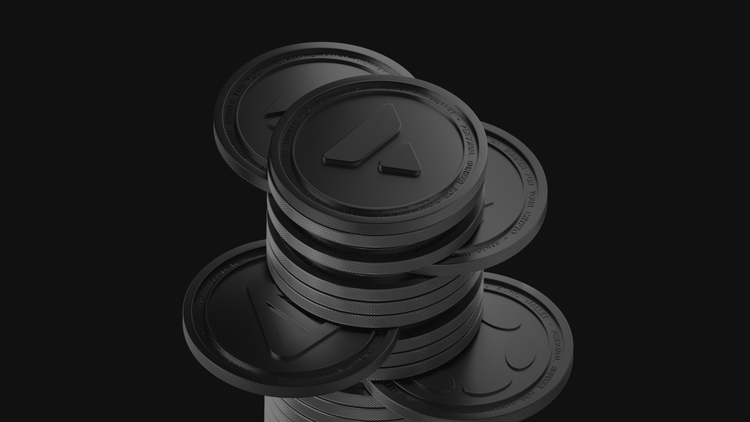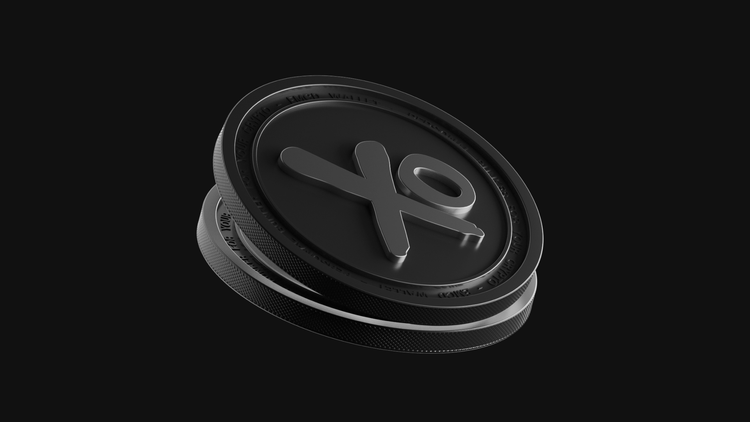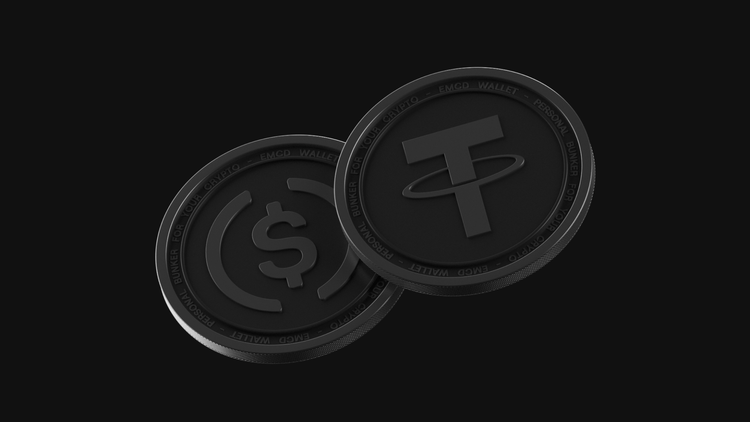Why Are Graphics Cards Used for Crypto Mining?

The idea that graphics cards exist solely for gaming is pretty outdated. Today, they’re probably just as associated with crypto mining. But why should you choose GPUs specifically? Let’s find out how GPU mining works and uncover what makes them so incredibly effective.
The mining industry began to flourish with Bitcoin’s launch in 2009. In its early years, crypto mining evolved rapidly, becoming a completely new phenomenon for many. The first wave of miners were tech enthusiasts fascinated by the emerging crypto world. They were the pioneers who mined the first Bitcoins, and thanks to their unwavering belief in the blockchain future, the industry continued its explosive growth.
Today, the crypto market is home to a vast array of digital coins, including Ethereum Classic, Bitcoin Cash, Dogecoin, Kaspa, and many others. These popular cryptocurrencies now boast market capitalizations reaching millions of dollars.
Without a doubt, the cryptocurrency space evolved into a massive empire, continuously attracting more miners worldwide. Every day, the number of crypto enthusiasts eager to dive into the ASIC, CPU, and GPU mining world continues to grow.
Many newcomers feel overwhelmed when choosing the right mining hardware that guarantees solid profitability. Experienced miners often advise against investing in expensive hardware right away since there’s a risk of not getting the ROI. Today, graphics cards remain one of the best options available for beginners.
Let’s explore why crypto mining uses graphics cards and how you can maximize your profits in the crypto world.
How Crypto Mining Works
Before diving into GPU mining, let’s first understand the core process of mining digital assets.
There are three key concepts in the crypto world:
- Cryptocurrency
- Miner
- Mining
Let’s break down each of these concepts in detail to clearly understand the process.
Mining wouldn’t exist without its key player — the miner. This crucial participant is a crypto user who powers the creation of new blocks in the blockchain network using high-performance hardware. As a reward for successfully finding a block, miners receive cryptocurrency.
Cryptocurrency, the miner’s reward for their efforts, is a form of digital money that exists solely in virtual form. Its biggest advantage is the ability to transact without intermediaries, offering full financial independence.
Mining is the process where miners solve complex cryptographic puzzles using powerful computing hardware to validate transactions within the blockchain network. It’s like being a digital detective, providing every transaction is safe and legitimate.
One of the miner’s key responsibilities is preventing double-spending when a crypto criminal tries to reuse the same digital coins fraudulently.
To solve this issue, the Proof-of-Work algorithm was developed. It ensures that all blockchain transactions are verified and secure, maintaining the network integrity.
How the Proof-of-Work algorithm works:
- Solving the puzzle: Using powerful hardware, the miner solves a complex cryptographic puzzle
- Adding transactions: Once solved, the miner adds the verified transaction data to the blockchain
- Network verification: Other participants in the network double-check the solution to ensure its accuracy
- Earning rewards: If everything is correct, the miner receives cryptocurrency as a reward for their efforts
Keep in mind that the reward goes to the participant who solves the cryptographic puzzle first, finding a valid block. To significantly increase the chances of successfully completing these operations, miners need high-performance hardware, a fast internet connection, and, in some cases, setting up a GPU mining farm for optimal results.

Let’s find out what GPU mining is and why this method is a great choice for beginners.
GPU vs CPU Mining: Why Graphics Cards Are the Ultimate Powerhouse for Crypto Mining
Ever wondered why mining with graphics cards is more profitable and convenient than using a CPU? Let’s break it down and uncover the secrets behind the GPU power.
CPU mining was the most popular mining method in the early Bitcoin days. Back in 2009, mining BTC didn’t require special software or expensive devices — just the power of a regular desktop computer or laptop. At that time, cryptocurrency mining wasn’t as widespread, and Bitcoin itself held little value, often costing less than your morning cup of coffee. While finding a valid block and earning rewards was relatively easy back then, very few people were interested in mining.
Without a doubt, as more participants joined the mining race, its difficulty skyrocketed. By the fall of 2024, Bitcoin’s market value had surged past $ 60 000. Today, crypto mining competition has reached unprecedented levels.
The increased mining difficulty forced miners to invest in high-performance hardware. Over time, CPU mining became less profitable, especially when powerful graphics cards entered the scene. This shift marked a new era in cryptocurrency mining, with GPUs taking center stage and revolutionizing the way digital coins are mined.
What Really Happens When a GPU Mines Cryptocurrency
Before diving into exploring the GPU's role in mining, let’s compare the architectural differences between CPUs and GPUs. Understanding these key distinctions will shed light on why GPUs are so much more effective for crypto mining.
CPU vs. GPU Architecture Comparison
| Criterion | CPU | GPU |
| Core Number | 4-8 cores | Thousands of smaller cores |
| Purpose | Solving complex tasks | Rapid task-switching |
| Task Focus | Handling individual, complex tasks | Processing millions of pixels, solving many simple, identical tasks simultaneously |
The obvious GPU advantage lies in its ability to process millions of pixels simultaneously. However, these devices aren’t designed for solving complex tasks or rapidly switching between them, which is where CPUs excel. GPUs are specialized for parallel processing, making them perfect for mining but less effective for tasks that require high versatility.

If you’re wondering why a graphics card is better for mining, it all comes down to the GPU architecture. Its design is perfectly optimized for the repetitive, parallel computations required in crypto mining, making it the ideal choice for the job.
One of the standout GPU features is their lightning-fast image processing speed, which is perfect for gaming and mining digital coins.
Essentially, mining is a process of testing countless combinations where only one symbol changes at a time. For this simple and repetitive task, thousands of small GPU cores are far more efficient than a few powerful CPU cores. The parallel GPU architecture lets it tackle these tasks much faster and more effectively.
As a result, mining any digital coin with a GPU is much more efficient. When it comes to crypto mining, GPUs are the clear winners.
Can I Mine Crypto with a CPU?

Quick Answer: Yes, you can.
The key to profitable CPU mining is choosing coins with hashing algorithms optimized for processors. One of the best options is Monero, which uses the RandomX algorithm designed specifically for CPU mining. Other cryptocurrencies also run on this algorithm, making it a great choice for miners looking to maximize their profits.
Hashing algorithms that perform best on CPUs depend on cache memory speed. They also require support for AES cryptographic instructions in the CPU.
It's worth noting that modern processors are well-equipped for this task since they offer fast cache access and come with built-in AES instructions, making them more efficient for CPU mining.
There’s no definitive answer to which device is best for mining or why a GPU might outperform a CPU. The choice ultimately depends on the cryptocurrency you want to mine and your individual setup.
Each mining method has its strengths, so finding the right hardware is all about matching it with the most profitable algorithm and coin.
GPU mining History
If you’re wondering why graphics cards are widely used for crypto mining, let's take a look at their evolution in the industry.
Originally, GPUs were designed for the gaming industry, handling graphics processing and rendering 3D visuals in video games. Over time, their parallel processing power made them ideal for cryptocurrency mining.
Today, the GPU market is dominated by two giants — Nvidia and AMD, leading the way in high-performance graphics card production.
The 1980s marked mass GPU production, but the term ‘GPU’ only gained popularity in 1999 after Nvidia’s groundbreaking GeForce 256 launch.
This model set new standards by using high-quality materials and cutting-edge technology. The GeForce 256 became the world’s first fully integrated graphics card, featuring a single-chip processor capable of transformation, clipping, rendering, and lighting. It was a game-changer in graphics processing.
It wasn’t until 2010, a year after Bitcoin's launch, that GPU mining started gaining traction. Before that, miners relied solely on multi-core CPUs since the idea of using graphics cards for mining hadn’t even been considered.
Back then, CPU mining could generate up to $10 per day, a modest but promising start to the crypto revolution.
In 2010, the legendary 10 000 BTC pizza purchase became a defining moment in crypto history. It was the first real-world transaction using Bitcoin, proving its value and sparking global interest in cryptocurrencies.
As a result, the crypto world was flooded with new miners eager to earn BTC. This surge in mining activity led to unprecedented competition and skyrocketing demand for high-performance GPUs, forever changing the crypto mining industry.

The year 2010 was a turning point for cryptocurrency mining, packed with game-changing events:
- GPU mining surged in popularity
- The first GPU mining software was released
- Mining farms emerged, marking the beginning of large-scale crypto mining operations
Back then, any crypto enthusiast with a few hundred dollars and basic technical skills could set up a GPU for mining.
This simplicity and affordability became key driving factors for countless miners, opening the door for anyone to join the crypto revolution.
As GPU mining grew in popularity, so did its difficulty. The increasing competition and higher hardware requirements meant miners needed more powerful equipment to stay profitable.
This shift led to skyrocketing prices for mining hardware, leaving many crypto enthusiasts facing new challenges.
In 2011, GPU mining began to fade, primarily due to the FPGA — Field-Programmable Gate Arrays — rise. These devices consumed three times less power than the previously popular graphics cards, making them far more efficient for mining.
An FPGA is a versatile device capable of functioning as a graphics card, microprocessor, encryption unit, or even all of these at once.
Despite their efficiency, the major FPGA drawback was the need to configure programmable components manually, making it challenging for many miners. Over time, miners began searching for pre-designed circuits tailored for specific tasks.
This shift marked the beginning of the ASIC — Application-Specific Integrated Circuit — era. It’s custom-built mining hardware designed for optimal performance in specific cryptocurrencies, revolutionizing the mining world.
ASIC-miners brought high hashing speeds and exceptional energy efficiency, quickly becoming the dominant force in Bitcoin mining by 2015. These powerful machines left GPUs behind, firmly establishing ASICs as the best BTC mining hardware.
And just like that, mining evolved from a tech enthusiast hobby into a full-fledged crypto industry, shaping the future of cryptocurrency.
F.A.Q.
Is it possible to mine with a CPU and GPU at the same time?
Yes, it’s possible. However, there's one important condition: the mining software must support simultaneous CPU and GPU mining configurations.
What does mining do to a graphics card?
During cryptocurrency mining, your graphics card is under significant strain since it solves complex cryptographic tasks. This heavy load can lead to increased temperatures and wear on crucial components.
You can avoid excessive heat and extend your equipment's lifespan with proper cooling and careful handling.
What’s the best crypto for GPU mining?
It depends on profitability and the hardware you have. Today, the most popular coins for GPU mining include Bitcoin Cash, Ethereum Classic, Ravencoin, and Litecoin.
Which is better: GPU mining or CPU mining?
The main GPU advantage is its ability to handle many similar tasks simultaneously, resulting in higher speeds and lower power consumption. While CPUs excel at handling complex and diverse tasks, they aren't always suited for every hashing algorithm.
This makes GPUs the best choice for crypto mining since they are compatible with most algorithms and can deliver higher profitability.




